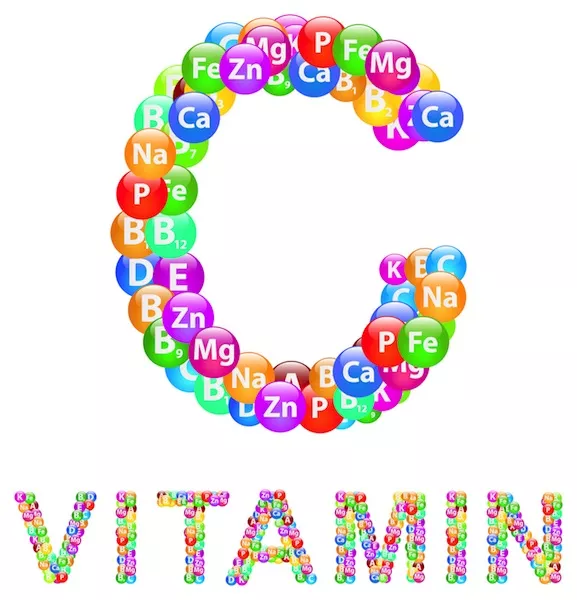Vitamin C ... Scurvy Fighter, Common Cold Fighter, Cancer Fighter and, last but not least, an Antioxidant

Other names:
- Ascorbic acid.
- L-Ascorbic Acid
- Ascorbate
- Ester-C (this is a patented Vitamin C formula, fast becoming well known that it is becoming a generic name for Vitamin C)
Nutrient Family:
- Vitamin
Historically, it was better known as the anti-“Scurvy” cure. In the days of sea voyages, seamen died by the thousands from the scurvy disease, and those who were sent ashore had a higher death toll. It was later discovered that :
- Deficiency in Vitamin C was the cause of scurvy
- Physical exertion/exercise, which generates free radicals, and the lack of Vitamin C, combined, increased the chances of contracting scurvy – hence, the sailors who were sent ashore usually had to do more physical work, and thus, their death toll was higher than those who stayed on board.
Vitamin C is one of the 5 known antioxidants in the Network Antioxidant team.
It is recycled by:
And it recycles :
Vitamin C's Workings
Fat or Water Soluble Antioxidant:
- Water Soluble
How Vitamin C works as an antioxidant:
- Providing cells with a free radical “neutralizer”
- Recycling Vitamin E, which is a potent immune-enhancing agent.
Other functions besides being an antioxidant:
- Boost Immune System
- Aid in lessening effects of Common Cold, and to lessen the cold’s severity if already contracted the cold – it fights the common cold, strategically by:
o Providing cells with a free radical “neutralizer”
o Recycling Vitamin E, which is a potent immune-enhancing agent.
o Suppresses (some) viral genes – preventing their replications
o Strengthen connective tissues by aiding collagen growth, which in turns helps prevents viral invasion in the cells
- Acts as a cofactor in enzymatic reactions
o such as - in the production of collagen. Collagen is found in skin, bone, ligament and blood vessel.
Since its is water soluble, it is the most easily transported antioxidant amongst the 5 in the Antioxidant Network team.
Where Is Vitamin C Found Naturally?
Vitamin C is sourced from plants and animals.
Human (and Guinea Pigs) cannot produce Vitamin C and hence, we need to obtain it from foods and/or supplements.

Examples of food sources :
- Citrus fruits
- Asparagus
- Collards
- Cantaloupes
- Avocados
- Green Peas
- Kale
- Papaya
- Persimmons
- Mangoes
- Watercress
- Feijoa
- Liver
- Oyster
- (Raw) Milk (human breast milk, but limited in other animal's milk)
Health Benefits of Vitamin C
Examples of the health benefits of Vitamin C:
- Treatment of scurvy
- Cancer fighter, in particular Lung and Prostate Cancer
0 Reduce risks of cancer - breast cancer, colon cancer, stomach cancer
- Suppresses viral genes
- Its ability to regenerate Vitamin E, helps indirectly with promoting healthy hearts, especially for diabetic patients
- Keeps immune function strong
- Protects against cataract
- Anti-aging
- Provides relief from infectious diseases – gum disease, acne, skin infection, bronchitis, stomach ulcers caused by bacteria, dysentery (infection of lower intestine), infections of bladder and gall bladder
- Eye diseases – glaucoma, cataracts
- Constipation
- Lyme disease
- Cystic fibrosis
- Infertility
- Autism
- Chronic Fatigue Syndrome (CFS)
- Diabetes
- Arthritis
- Disc Swelling
- Osteoporosis
- Aid drug addiction withdrawal
- Countering side effects of cortisone
- Reduce risks of stroke
- Reduce hypertension
- Gout
It is suggested that people who are diabetic increase their Vitamin C intake. This is because Vitamin C is molecularly similar to glucose, and both require insulin as a mode of transportation in the body. Both will compete to get on board the insulin ride. In a Vitamin C deficient body, the glucose will be able "elbow out" Vitamin C in competing to get on the insulin ride. Hence, diabetic patients runs the risk of Vitamin C (and antioxidant) deficiency; Vitamin C are required both a nutrient and antioxidant for protection from damage caused by diabetic related health issues (such as nerve damage and heart disease). Insulin on the other hand, needs antioxidant to help it get around. Hence, ensuring sufficient Vitamin C for diabetic patients is a triple whammy:
- It
ensures there is enough Vitamin C to enter the cells to counter oxidative stress (its work as an antioxidant)
- and ensures enough antioxidants for insulin to circulate/get around (ensuring enough mode of transportation)
- which in turns, ensures enough Vitamin C and glucose travel around the body (ensuring as many “workers”- Vitamin C and
glucose - travel around the cells/body as possible, to do their respective work)
Some precautions
At high doses may cause:
- diarrhea
- abdominal cramps
- nauseous
- persons with deficit in iron or folic metabolism may have negative reactions if megadoses are taken, but these cases are rare
Home > Types of Antioxidants > Return to the Top - Vitamin C
Do you have a PASSION you want to share with the world??? What better exposure than the INTERNET?!!!
Want to consider?
Well, you will need a place to "host" (place) your site, then the tools to build, run as well as track the performance of your Masterpiece!
OR, if you already have a site, but find that you are paying too much for tools and apps to run and track your site ...
Here's an All-in-One Solution for you! Hosting, as well as Tools to build, run and track!
